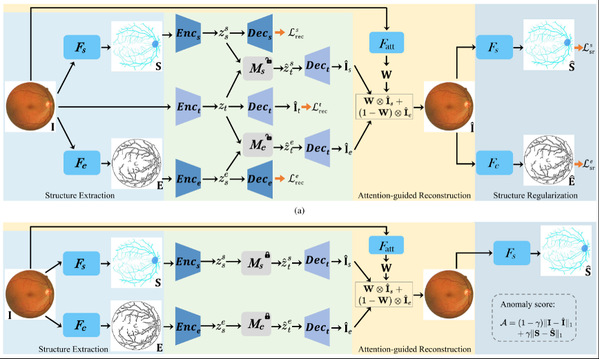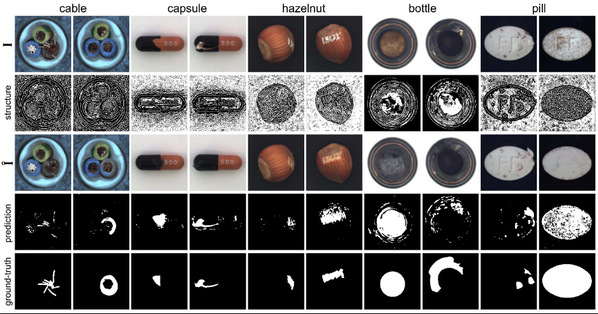Recently, Associate Professor Gao Shenghua's research group, together with their collaborators, made important progress in image anomaly detection, and published a paper entitled “Memorizing Structure-Texture Correspondence for Image Anomaly Detection” in IEEE Transactions on Neural Networks and Learning Systems (TNNLS), a representative academic journal in the field of machine learning.
Image anomaly detection refers to the identification of image abnormality in the test phase by leveraging only normal images in the training phase. In real-world scenarios, abnormal samples (e.g., the uncommon defects in industrial inspection images and the uncommon diseases in medical images) are rare and have various possibilities, so it is difficultto collect lots of samples with all possible anomalies. Consequently, traditional image classification methods cannot be directly applied in these scenarios. In contrast, normal training samples can be collected relatively easily, and therefore can be leveraged to train a model for anomaly detection. Because of the potential applications in industrial image and medical image analysis, anomaly detection has attracted wide attention.
Most methods tackle anomaly detection by reconstructing the input images with an Auto-Encoder based model, where an underlying assumption is that the reconstruction errors for the normal images are small and those for the abnormal images are large. However, in the training phase, these Auto-Encoder based methods can also reconstruct the anomalies well, just like a normal image, so that the model recognized the anomalies as the normal images, and thus becomes less sensitive to these anomalies.
To conquer this issue, Gao Shenghua’s research group proposed a structure-texture correspondence memory module to reconstruct the image, where a memory mechanism is used to characterize the mapping from the normal structure to its corresponding normal texture. Specifically, they observe that usually for normal images, the texture can be inferred from its corresponding structure, while it is hard to infer the texture from a destroyed structure for the abnormal images. As the correspondence between destroyed structure and texture cannot be characterized by the memory, the abnormal images would have a larger reconstruction error, facilitating anomaly detection. Extensive experiments verify that the method proposed in this paper is effective for industrial inspection images and medical images.
This work was undertaken at ShanghaiTech University, and the collaborators are Southern University of Science and Technology, Shanghai Jiao Tong University and A-STAR. Ph.D. student Zhou Kang and Li Jing from ShanghaiTech are the co-first authors. Professor Gao Shenghua is the corresponding author.
Link to this article:
https://ieeexplore.ieee.org/document/9513473

Fig. 1 Overall framework of the proposed method.

Fig. 2 Qualitative results.